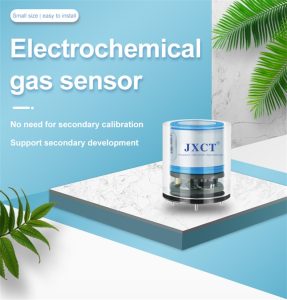Air pollution is a global issue that poses significant risks to human health and the environment. To tackle this problem effectively, accurate and reliable air quality monitoring is crucial. Gas sensors have emerged as powerful tools in measuring and analyzing air pollutants. This article explores the role of gas sensors in monitoring air quality, their applications, and the importance of their widespread adoption.

Understanding Gas Sensors:
Gas sensors are devices designed to detect and measure the concentration of various gases in the air. These sensors operate based on different principles such as electrochemical, optical, catalytic, and semiconductor technologies. They can identify specific gases and provide real-time measurements, enabling continuous monitoring of air quality in both indoor and outdoor environments.
Outdoor Air Monitoring:
Gas sensors play a critical role in monitoring outdoor air quality, particularly in urban areas where pollution levels tend to be higher. They can detect and measure a wide range of pollutants, including nitrogen dioxide (NO2), ozone (O3), carbon monoxide (CO), sulfur dioxide (SO2), and particulate matter (PM). By providing accurate data on pollutant concentrations, gas sensors assist in identifying pollution sources, evaluating the effectiveness of pollution control measures, and formulating targeted mitigation strategies.
Indoor Air Quality Assessment:
Indoor air pollution is a significant concern, as people spend a substantial amount of time indoors. Gas sensors are invaluable tools for assessing and improving indoor air quality. These sensors can detect volatile organic compounds (VOCs), such as formaldehyde, benzene, and toluene, which may be emitted by building materials, furniture, cleaning products, and other indoor sources. By continuously monitoring VOC levels, gas sensors enable the identification of potential health hazards and the implementation of appropriate ventilation and filtration systems.
Industrial Emissions Monitoring:
Gas sensors are widely used in monitoring emissions from industrial facilities. These sensors help measure and analyze gases emitted during various industrial processes, including power generation, manufacturing, and chemical production. By monitoring pollutants like sulfur oxides (SOx), nitrogen oxides (NOx), volatile organic compounds (VOCs), and greenhouse gases, gas sensors assist industries in complying with environmental regulations, optimizing processes, and reducing their environmental footprint.
Personal Air Quality Monitoring:
Advancements in miniaturization have made it possible to develop personal air quality monitors equipped with gas sensors. These portable devices allow individuals to monitor the air quality in their immediate surroundings and gain insights into their exposure to pollutants. Personal air quality monitors provide real-time data on pollutant concentrations, enabling individuals to make informed decisions about their activities and take necessary precautions to protect their health.
Smart City Applications:
Gas sensors are an integral part of smart city initiatives aiming to create sustainable and livable urban environments. By deploying gas sensors throughout a city, authorities can build a comprehensive air pollution monitoring network. Real-time data from these sensors can be combined with other sources, such as meteorological data and traffic patterns, to generate accurate pollution maps. This information helps in developing targeted policies, implementing effective traffic management systems, and improving urban planning for better air quality.
Conclusion:
Gas sensors have revolutionized the monitoring of air quality, providing valuable insights into pollutant concentrations and their sources. From monitoring outdoor and indoor air quality to assessing industrial emissions and enabling personal air quality monitoring, gas sensors play a crucial role in addressing the global issue of air pollution. Their widespread adoption is essential for effective air quality management, policy development, and public health protection. Governments, industries, and individuals should actively embrace gas sensor technology to work towards cleaner and healthier air for current and future generations.
 : +86 155 8830 2704
: +86 155 8830 2704 : jxdziot@gmail.com
: jxdziot@gmail.com
